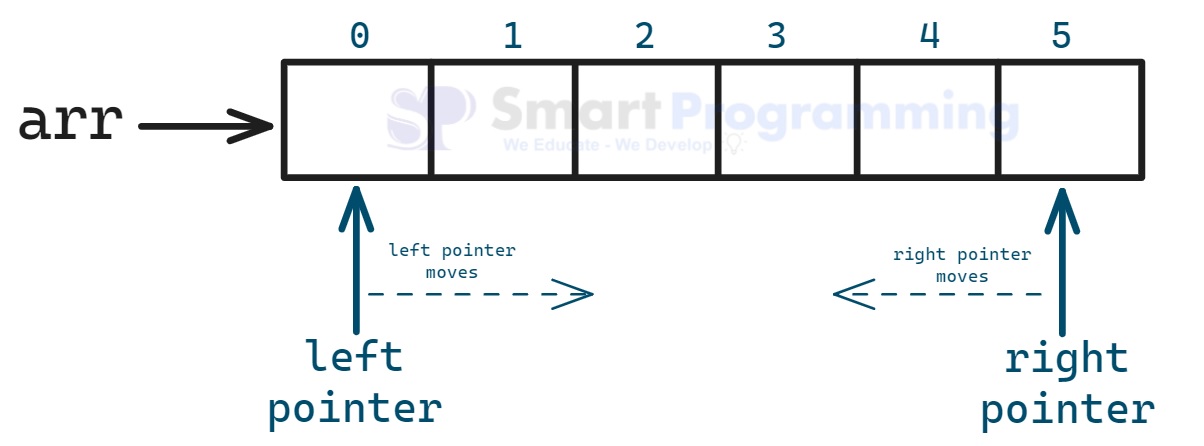Two Pointers Technique
Introduction
-
The Two Pointers Technique is a problem-solving strategy where we use two variables
(
pointers) to traverse anarray,string, orlinked listfrom different directions or at different speeds. -
Its goal is to reduce time complexity by avoiding nested loops and processing
data in
O(n)instead ofO(n²). -
Types of Movement:
-
Opposite Direction: One pointer starts from the beginning, another from the end
(e.g.,
Two Sumin sorted array etc). -
Same Direction: Both pointers start from the beginning, one moves faster/slower
(e.g.,
Remove Duplicates,Sliding Windowetc).
-
Opposite Direction: One pointer starts from the beginning, another from the end
(e.g.,

-
Advantages:
-
Better Time Complexity: Often reduces from
O(n²)→O(n)orO(n log n). -
Space Efficient: Works with constant extra space (
O(1)). - Simpler Logic: Easy to implement once we understand the pattern.
-
Versatile: Can be applied to
arrays,strings, andlinked lists.
-
Better Time Complexity: Often reduces from
-
When to Use:
Use Two Pointers Technique when:-
The
array/stringis sorted (most common case). -
We have linear data structures like
arrays,strings,linked listsetc. -
We want to optimize nested loops (avoid brute force
O(n²)). -
We are working with
subarrays/substrings(sliding window is an extension of this). -
We need to find a pair, triplet or subarray satisfying a condition
(
sum,difference, etc.). -
We want to minimize/maximize something (
window size,distance).
-
The
Programs:-
-
Program 1: Two Sum in Sorted Array (Using Opposite Direction)
public class MainApp1 { public static void main(String[] args) { int[] arr = {2, 3, 4, 7, 11, 15}; int target = 10; int left = 0, right = arr.length - 1; boolean found = false; while (left < right) { int sum = arr[left] + arr[right]; if (sum == target) { System.out.println("Pair found at "+left+" and "+right+" index positions"); found = true; break; } else if (sum < target) { left++; // Move left pointer forward } else { right--; // Move right pointer backward } } if (!found) System.out.println("No pair found"); } }Output:
Pair found at 1 and 3 index positions
-
Program 2: Remove duplicates from sorted array
public class MainApp2 { public static void main(String[] args) { int[] arr = {1, 1, 2, 2, 3, 3, 4, 5}; int n = arr.length; int left = 0; // points to last unique element int right = 1; // used to scan the array while (right < n) { if (arr[right] != arr[left]) { left++; // move left to next position arr[left] = arr[right]; // place unique element at left } right++; // always move right pointer } // Print unique elements (first left+1 elements are unique) System.out.print("Array after removing duplicates: "); for (int i = 0; i <= left; i++) { System.out.print(arr[i] + " "); } } }Output:
Array after removing duplicates: 1 2 3 4 5
Two-Pointers Technique Task:
Try to solve the following problems using the Two Pointers Technique:
- WAP to Move Zeros to End of an Array
- WAP to Find Triplet with Given Sum in a Sorted Array
- WAP to Check if an Array is Palindrome
- WAP to Find Maximum Water Container
Help Us Get Better Every Day
Your feedback helps us grow! If there's anything we can fix or improve, please let us know.
We’re here to make our tutorials better based on your thoughts and suggestions.



